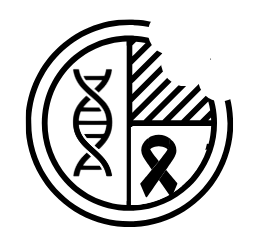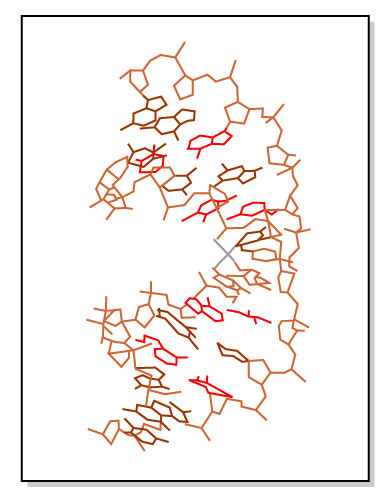Tushar Date
Estimated Reading time: 4 minutes
Cisplatin is an old, platinum based anticancer drug that kills cancer cells by damaging their DNA. Its cytotoxic (cell-killing) properties were discovered by accident in the 1960s, when Barnett Rosenberg was performing experiments to analyse the effect of electric field on bacterial growth. He observed that bacterial proliferation stopped when a platinum electrode was used in his experiments. Later on, Rosenberg and his colleagues identified cisplatin as a key compound responsible for the anti-proliferative effect. After that, the drug underwent clinical trials and was approved for use as an anti-cancer agent around the world in the late 1970s. Since then, cisplatin has been widely used to treat solid tumors, including ovarian, testicular, bladder, colorectal, lung and head and neck cancers.
Despite its success, the use of cisplatin is clinically challenging due to its severe side effects such as kidney damage, bone marrow suppression, and nerve damage. The aggressive tumor cells often develop their own defence strategy to cisplatin by accelerating repair of DNA damage caused by cisplatin, leading to the development of drug resistance causing patients to become unresponsive to cisplatin therapy. Another issue with cisplatin is that the platinum atom in cisplatin’s chemical structure is highly reactive. It rapidly binds to amino acid residues present in human serum albumin in blood, causing drug inactivation. For a drug to cause tumor cell killing, it needs to be taken up inside tumor cells in an effective amount. The poor lipophilicity of cisplatin results in very limited uptake in tumor cells and can make cisplatin therapy ineffective in some cases. Due to these limitations, and the emergence of newer and safer anticancer drugs, cisplatin chemotherapy has lost its momentum in clinical therapy in the last few decades.
Recently, the emergence of triple-negative breast cancer (TNBC), rekindled the interest in cisplatin due to its high effectiveness in TNBC. To sustain the high metabolic needs of a tumor, cancer cells show overexpression of various receptors on their cell surface which help cell survival by facilitating nutrient uptake. Most breast cancer cells commonly overexpress three key receptors on their cell surface: progesterone receptor (PR), estrogen receptor (ER) and human epidermal growth factor receptor (HER2). The most commonly used anticancer drugs for breast cancer usually act to block any of these three receptors to induce tumor death. However, in TNBC (a subtype of aggressive breast cancer), tumor cells lack expression of PR, ER and HER2, making the majority of drugs ineffective. Tumors in TNBC show a rapid growth rate, quick development of drug resistance and ability to transfer (metastasise) from the site of origin. Currently, there is no standard treatment regimen established for TNBC treatment, making management of this cancer challenging.
Gene expression studies in TNBC patients showed that between 16-42% of TNBC patients show dysfunction of breast cancer gene 1 (BRCA1). The BRCA1 dysfunction prevents TNBC cells from repairing damaged DNA and therefore provide an opportunity to develop an effective treatment for TNBC. This unique finding triggered research interest in the use of DNA damaging agents to treat TNBC. Numerous clinical trials have shown that cisplatin (alone and/or in combination with other anticancer drugs) is highly effective in inducing TNBC tumor cell death and reducing tumor volume. These findings have renewed interest in cisplatin therapy for TNBC treatment.
Now the major question that comes to mind is – how to overcome the limitations and side-effects of cisplatin therapy and make it more effective and safer for patients? Well, as per available preclinical and clinical research data, there are three possible strategies which can help in resolving this challenge. The first strategy is to chemically modify cisplatin to enhance its anticancer activity, lower the risk of resistance development, reduce side effects and to attain better stability in blood. This could be achieved by chemical modification of cisplatin by forming prodrugs specifically known as platinum IV prodrugs. A prodrug is a form of medication that is metabolised into a pharmacologically active drug in the body. In platinum IV prodrug formation, cisplatin is chemically modified by attaching additional chemical groups to the central platinum atom which can help in improving anticancer activity and biological properties of cisplatin (e.g. reduced risk of resistance development or tumor selective drug delivery). Another strategy is utilization of nanocarriers to deliver cisplatin at the tumor site. Nanocarriers are nanometer sized carriers loaded with drugs which help to preferentially deliver anticancer drugs to tumor. The nanocarrier based cisplatin delivery can help to reduce drug-protein interactions, achieve selective accumulation at tumor site,reduce exposure to healthy organs, improve cellular drug uptake and provide controlled drug release. The third strategy is to combine cisplatin chemotherapy with other class of drugs such as taxanes, anthracyclines or kinase inhibitors. The combination therapy may help in simultaneously attacking multiple pathways of TNBC progression and reducing risk of resistance development. This approach can also help in reducing the amount of cisplatin needed to induce tumor death and therefore assist in limiting side effects of cisplatin.
Overall, TNBC is a highly complicated disease with limited clinical understanding and treatment options available. There are many clinical studies working to find effective solutions for TNBC, and it seems that platinum-based drugs such as cisplatin may be one of the most effective weapons to win the battle against TNBC.
Edited by Kate Secombe
Works Discussed
1. Dilruba, S., & Kalayda, G. V. (2016). Platinum-based drugs: past, present and future. Cancer chemotherapy and pharmacology, 77(6), 1103-1124.
2. Guan, X., Ma, F., Fan, Y., Zhu, W., Hong, R., & Xu, B. (2015). Platinum-based chemotherapy in triple-negative breast cancer: a systematic review and meta-analysis of randomized-controlled trials. Anti-cancer drugs, 26(8), 894-901.
3. Xu, K., Shi, Y., Wang, X., Chen, Y., Tang, L., & Guan, X. (2019). A novel BRCA1 germline mutation promotes triple-negative breast cancer cells progression and enhances sensitivity to DNA damage agents. Cancer genetics, 239, 26-32.
4. Kang, X., Xiao, H. H., Song, H. Q., Jing, X. B., Yan, L. S., & Qi, R. G. (2015). Advances in drug delivery system for platinum agents based combination therapy. Cancer biology & medicine, 12(4), 362.
5. Johnstone, T. C., Suntharalingam, K., & Lippard, S. J. (2016). The next generation of platinum drugs: targeted Pt (II) agents, nanoparticle delivery, and Pt (IV) prodrugs. Chemical reviews, 116(5), 3436-3486.
Image Credits


The author’s suggestions in way of cisplatin based therapy for TNBC could be successful in treating BRCA mutated breast cancer cells, but I doubt its efficacy in targeting breast cancer cells without BRCA mutations
LikeLike